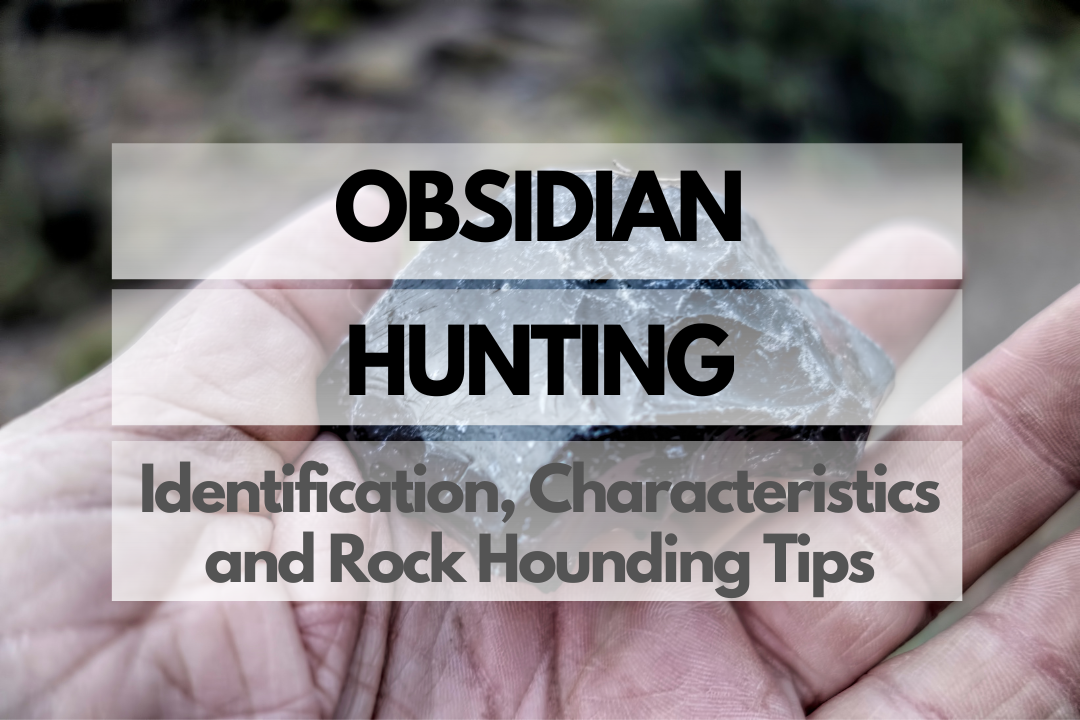Welcome to the exciting world of obsidian hunting! Obsidian is a beautiful and fascinating volcanic glass that has captivated rock enthusiasts for centuries. In this article, we’ll dive into the history of obsidian, learn how to identify it, explore its various types, and discover some tips for rock hounding. Get ready to embark on an adventure into the mesmerizing world of obsidian!
History & Origin of Obsidian
Obsidian is an igneous rock formed from rapidly cooling lava. This natural glass has been used by humans for thousands of years, dating back to prehistoric times. Its name comes from the Roman explorer Obsius, who is said to have discovered it in Ethiopia. Different cultures have used obsidian for various purposes such as tools, weapons, and decorative items. The ancient Aztecs and Mayans prized obsidian for its sharp edges, using it to create knives and spearheads. In some Native American cultures, it was believed to have protective and healing properties.
Obsidian Identification & Physical Properties
| Property | Value |
|---|---|
| Mineral Class | Volcanic Glass |
| Chemical Composition | 70-75% SiO2, plus MgO and Fe3O4 |
| Color | Black, brown, green, blue, red, and various other shades |
| Hardness | 5-5.5 on Mohs scale |
| Luster | Vitreous |
| Transparency | Translucent to opaque |
| Fracture | Conchoidal |
Obsidian Colors
Obsidian comes in a variety of colors, depending on the minerals and impurities present in the lava. The most common color is black, but it can also be found in shades of brown, green, blue, red, and even rainbow patterns.
Obsidian Hardness
Obsidian has a hardness of 5-5.5 on the Mohs scale, making it relatively easy to work with for lapidary purposes and toolmaking. However, its conchoidal fracture creates very sharp edges, which can be dangerous if not handled carefully.
Obsidian Types
Black Obsidian
Black obsidian is the most common type and is known for its deep, glossy appearance. It is often used for carving, jewelry, and ornamental pieces.
Mahogany Obsidian
This type of obsidian has a reddish-brown hue due to the presence of iron in the glass. Mahogany obsidian is popular for its beautiful, banded appearance.
Snowflake Obsidian
Snowflake obsidian is characterized by its black base with white or gray “snowflake” patterns. These patterns are formed by the inclusion of cristobalite, a type of silica mineral.
Rainbow Obsidian
Rainbow obsidian exhibits a stunning iridescence caused by thin layers of different minerals, creating a rainbow-like sheen on the surface. This type of obsidian is highly sought after for its unique appearance.
Apache Tears
Apache tears are small, rounded nodules of obsidian that are often found embedded in perlite. They are usually translucent and can be used for jewelry making and other crafts.
Obsidian Uses
- Tools and weapons, such as knives and arrowheads
- Jewelry and ornamental pieces
- Lapidary work, such as carving and cutting
- Grounding and protective stones in metaphysical practices
How Much Is Obsidian Worth?
The value of obsidian can vary greatly depending on factors such as size, color, quality, and rarity. In general, common black obsidian can be found for as little as$1 per pound, while more rare and high-quality specimens, like rainbow obsidian, can fetch upwards of $100 or more per pound. It is important to remember that the value of obsidian is subjective and can change based on market demand and the preferences of individual collectors.
Obsidian Rock Hounding Tips
Ready to embark on an obsidian hunting expedition? Follow these tips and tricks to ensure a successful, enjoyable, and safe adventure!
Essential Tools and Equipment
- Rock hammer or geologist’s hammer for breaking and chipping rocks
- Chisel to separate specimens from surrounding rock
- Hand lens or magnifying glass for close examination
- Sturdy gloves to protect your hands from sharp edges
- Sturdy shoes or boots for navigating rough terrain
- Backpack or collecting bag to carry your finds
- Notebook and pen for documenting your discoveries
- GPS device or smartphone app to mark locations
Safety Tips
- Always wear safety goggles to protect your eyes from flying rock fragments.
- Wear long sleeves and pants to protect your skin from cuts and scratches.
- Carry a first aid kit in case of minor injuries.
- Bring plenty of water and snacks to stay hydrated and energized.
- Always inform someone of your plans and expected return time.
- Be aware of your surroundings and watch for potential hazards such as falling rocks, wildlife, or unstable terrain.
Obsidian Hunting: Where to Find Obsidian
Obsidian can be found in volcanic regions around the world. Some of the best places to search for obsidian are the United States, Mexico, Italy, and Ethiopia. Check out the table below for specific locations to find this captivating volcanic glass:
| Site/Area | Location |
|---|---|
| Glass Buttes | Oregon, United States |
| Obsidian Dome | California, United States |
| El Chayal | Guatemala City, Guatemala |
| Teotihuacan | Mexico State, Mexico |
| Lipari Islands | Sicily, Italy |
| Dallol Volcano | Afar Region, Ethiopia |
Caring For Your Obsidian
To keep your obsidian specimens in pristine condition, follow these basic care tips:
- Handle with care, as obsidian can be fragile and its edges may be sharp.
- When cleaning, use a soft brush and mild soap to gently remove dirt and debris. Rinse with water and pat dry with a soft cloth.
- Store specimens in a padded box or display case to protect them from damage.
- Keep obsidian away from direct sunlight and extreme temperatures, as this can cause fading or cracking.
Additional Resources
- Mindat.org – Obsidian information
- United States Geological Survey (USGS)
- Rockhounds.com – Online community for rock enthusiasts
- American Federation of Mineralogical Societies
- A Text-Book of Precious Stones by Frank Bertram Wade
Additional Obsidian FAQs
What are the benefits of Obsidian?
Obsidian is prized for its beauty, unique properties, and versatility, making it popular among rock collectors, lapidary artists, and jewelry makers. Its natural sharp edges have also made it a valuable resource for ancient tools and weapons.
Do Obsidian have any healing properties?
While there is no scientific evidence to support the idea ofhealing properties in obsidian, some people believe that this stone can provide protection, grounding, and emotional healing. These claims are based on cultural beliefs and personal experiences, rather than empirical data.
Do Obsidian have any spiritual meaning?
In various cultures, obsidian has been associated with different spiritual meanings. For instance, some Native American cultures view obsidian as a powerful and protective stone, while others see it as a symbol of transformation and inner growth. Again, these interpretations are based on cultural beliefs and personal experiences.
Do I need a permit to go Obsidian hunting?
Permit requirements for obsidian hunting may vary depending on the location. In the United States, collecting rocks on public lands managed by the Bureau of Land Management (BLM) typically requires a permit. Visit the BLM rock collecting page for more information on permits and regulations.
Closing Thoughts
Obsidian hunting is an exciting and rewarding pastime that allows you to explore nature, learn about fascinating geological formations, and add unique specimens to your collection. By following the tips and advice shared in this article, you’ll be well-equipped for a successful and enjoyable obsidian hunting adventure. So, grab your gear, gather your friends or family, and set out on an unforgettable journey to discover the captivating beauty of obsidian!

